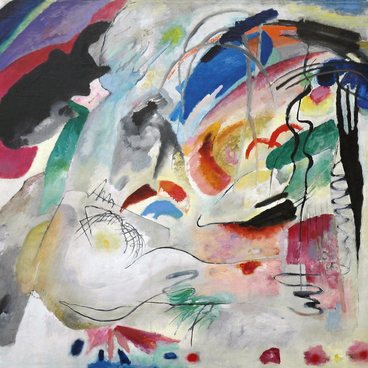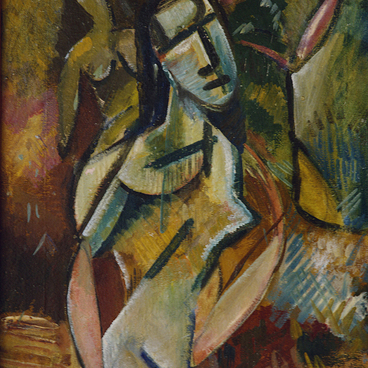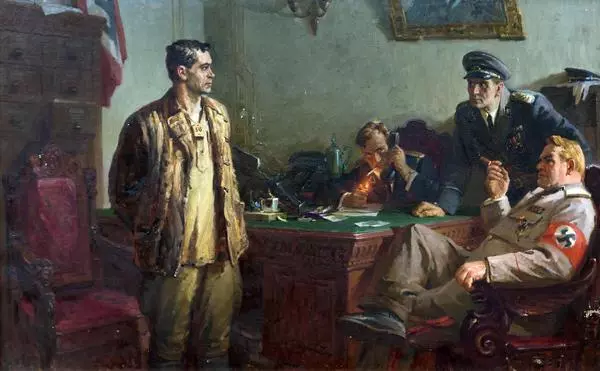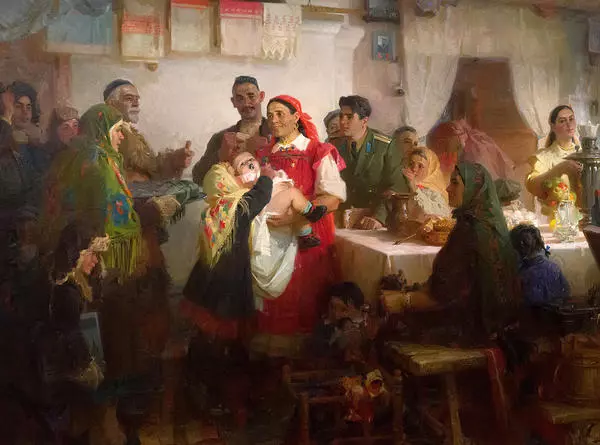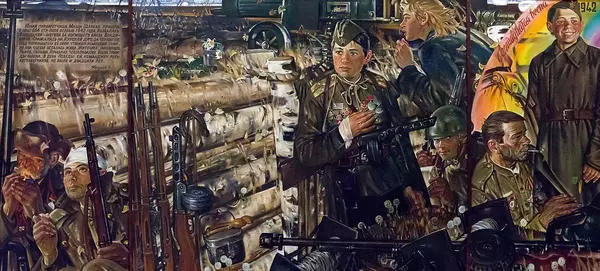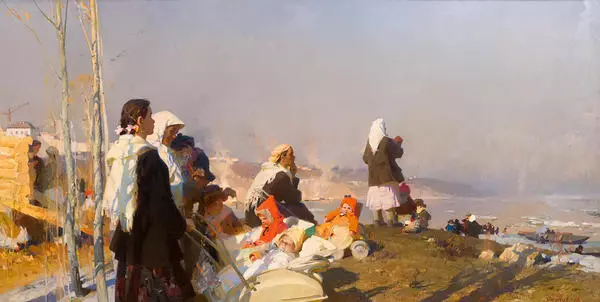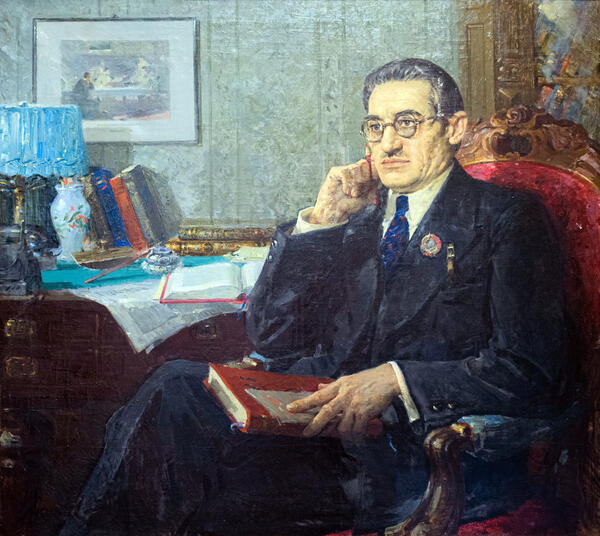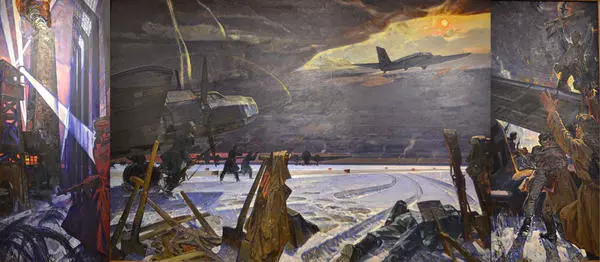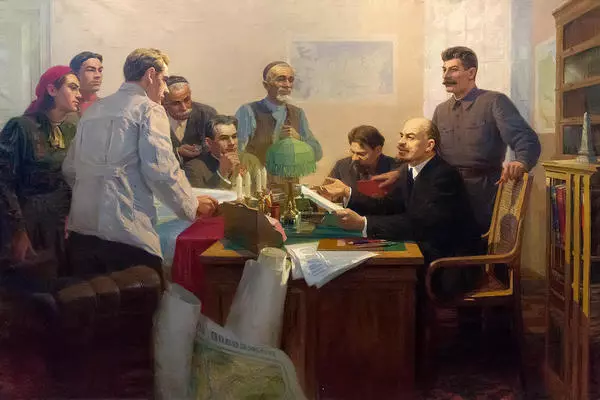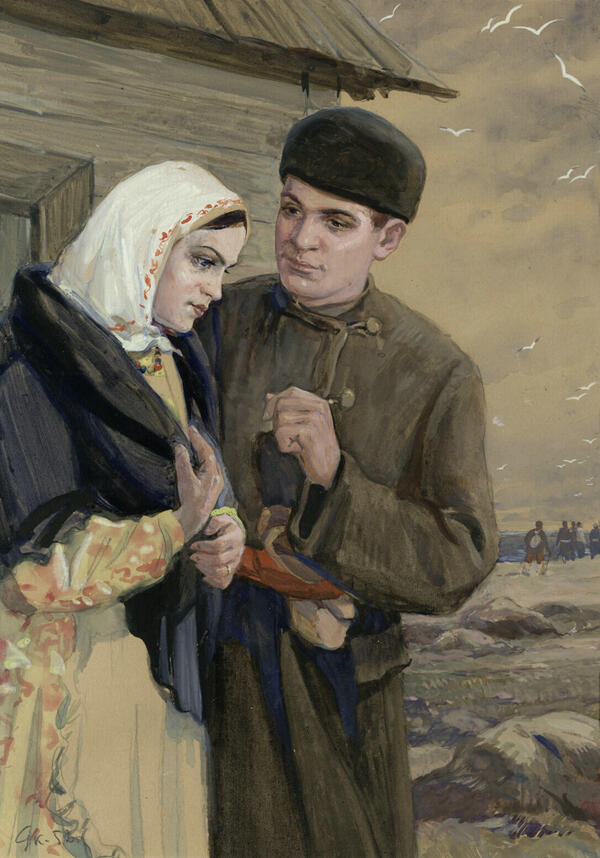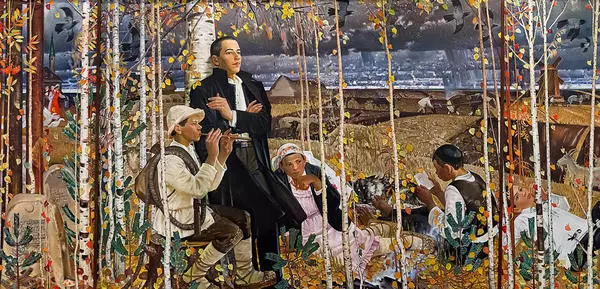In the 1970s, three art groups were established in the Artists’ Union of Tatarstan and two of them, the Oil and the KAMAZ, were headed by Haris Yakupov. Together with the artists’ groups, he visited the towns of Almetyevsk, the center of oil producing industry, and Naberezhnye Chelny where the construction of the famous Kama vehicle factory was in full swing. It was there that he observed the local life, found appropriate character types and made sketches for his pictures Gold of Tatarstan and Beauties of Chelny. In 1975, the picture Gold of Tatarstan won the First Prize for painting at the exhibition Soviet Russia. During his life, Yakupov was honored with many titles and awards. He was the only artist of Tatarstan who was awarded the title of People’s Artist of the USSR.
The pivotal theme in Yakupov’s creative work was man and his cause along with his constructive labor. The artist studied thoroughly people of labor such as collective farmers or shock workers at the KAMAZ construction site, admiring their powerful physique and strength of spirit. In his pictures, ordinary working people look like real heroes. This heroic motif of the Gold of Tatarstan is manifest in the realistic representation of severe everyday life and work of oilmen. The canvas is strikingly enormous, being nearly three meters long; the faces are intentionally enlarged.
The title of the picture is meaningful and symbolic. The oil reserves of the republic are called its black gold while the people, its working class are viewed as the true gold of Tatarstan. The title also refers to nature, to the golden colors of the fall. The artist is especially concerned with the inner world of the characters and he tries to reveal in detail their complicated state of mind. They are deep in thought, concentrated and determined, their thoughtfulness on the verge of sadness. The fall season is in tune with that melancholic tone.
The pivotal theme in Yakupov’s creative work was man and his cause along with his constructive labor. The artist studied thoroughly people of labor such as collective farmers or shock workers at the KAMAZ construction site, admiring their powerful physique and strength of spirit. In his pictures, ordinary working people look like real heroes. This heroic motif of the Gold of Tatarstan is manifest in the realistic representation of severe everyday life and work of oilmen. The canvas is strikingly enormous, being nearly three meters long; the faces are intentionally enlarged.
The title of the picture is meaningful and symbolic. The oil reserves of the republic are called its black gold while the people, its working class are viewed as the true gold of Tatarstan. The title also refers to nature, to the golden colors of the fall. The artist is especially concerned with the inner world of the characters and he tries to reveal in detail their complicated state of mind. They are deep in thought, concentrated and determined, their thoughtfulness on the verge of sadness. The fall season is in tune with that melancholic tone.


